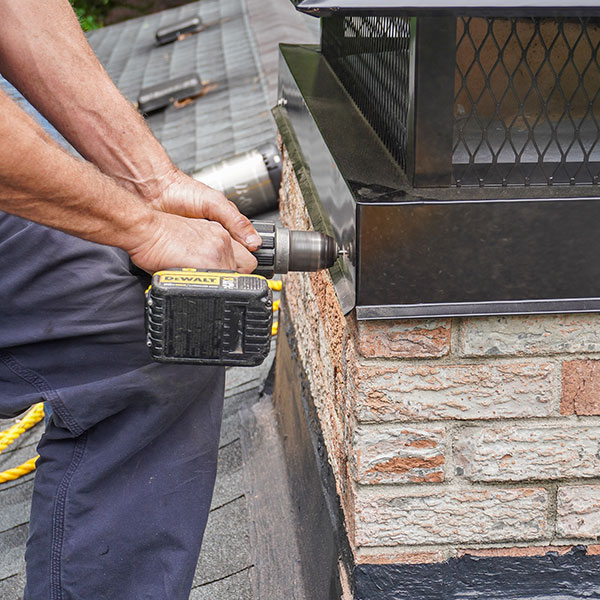Dangers of Using Your Fireplace Without an Inspection
Not to overlook the pleasures of a cozy home fire, the reality is that failing to schedule a chimney inspection before using your fireplace can have costly consequences. Chimney inspections are safety measures, similar to replacing bald tires on your vehicle and ensuring that the smoke alarms in your home are operational. If grasping the importance of scheduling annual chimney inspections has thus far escaped you, read on for helpful insights.
 Creosote Buildup
Creosote Buildup
If you have a wood-burning fireplace, creosote buildup in your chimney becomes a safety threat. Creosote is a byproduct of firewood combustion. It is a tar-like substance that can ignite when embers float up the chimney flue. Creosote doesn’t just start chimney fires. It fuels chimney fires keeping them burning. Layer upon layer, creosote builds up until it can create an obstruction in the flue.
A common result of a chimney fire is that the chimney flue becomes damaged. It is essential for a flue to be fully intact. Once a homeowner is aware that the chimney flue is even slightly damaged, the fireplace should not be used again until the flue has been repaired or replaced.
Chimney Fires
Thanks to an unfortunate and misleading myth suggesting that chimney fires are helpful for eliminating creosote, many homeowners are unaware that chimney fires are extremely dangerous. Chimney fires virtually always cause structural damage to the flue liner. Without an intact flue liner, using the fireplace makes the home vulnerable to fires and can expose occupants to toxic fumes.
The most common cause of chimney fires is creosote buildup. Starting a fire in the fireplace when there is any type of flammable debris in the chimney also causes hazardous chimney fires that can spread and cause house fires. Where a chimney inspection comes in is that it provides the opportunity for a professional chimney sweep to identify potential dangers, including the potential threat of chimney fires.
Exposure to Toxic Fumes
Combustion gases are toxic and include deadly carbon monoxide (CO). When a chimney sweep inspects your chimney with a level 2 inspection, a video is taken of the flue liner from top to bottom. The specialized type of camera used is able to pick up on even the smallest cracks that may be in the flue. This is essential because a damaged flue puts a fireplace out of commission. When a chimney flue is even slightly damaged, toxic gases can leak into the home and threaten the lives of its occupants.
 Flammable Obstruction
Flammable Obstruction
Although creosote is the most common type of obstruction in chimney flues, other substances stuck in a chimney can also cause hazardous fires. If you don’t have a chimney cap installed on the top of the flue, leaves and limbs can enter the chimney and create a blockage. There might even be birds’ nests in your chimney that could catch fire when you light the fireplace.
Contact Guardian Chimney Sweeps
When you schedule a chimney inspection with the Certified Chimney Professionals™ at Guardian Chimney Sweeps, you can be confident you’re receiving reliable chimney services. Contact us today to schedule a chimney inspection, chimney cleaning, chimney repair, masonry rebuild, and any other needs you may have related to your fireplace and chimney. Call any of the numbers below:
Toll-free: (888) 306-6069
Conroe: (936) 271-9781
Houston: (713) 401-2011

 Tap to Call Now
Tap to Call Now